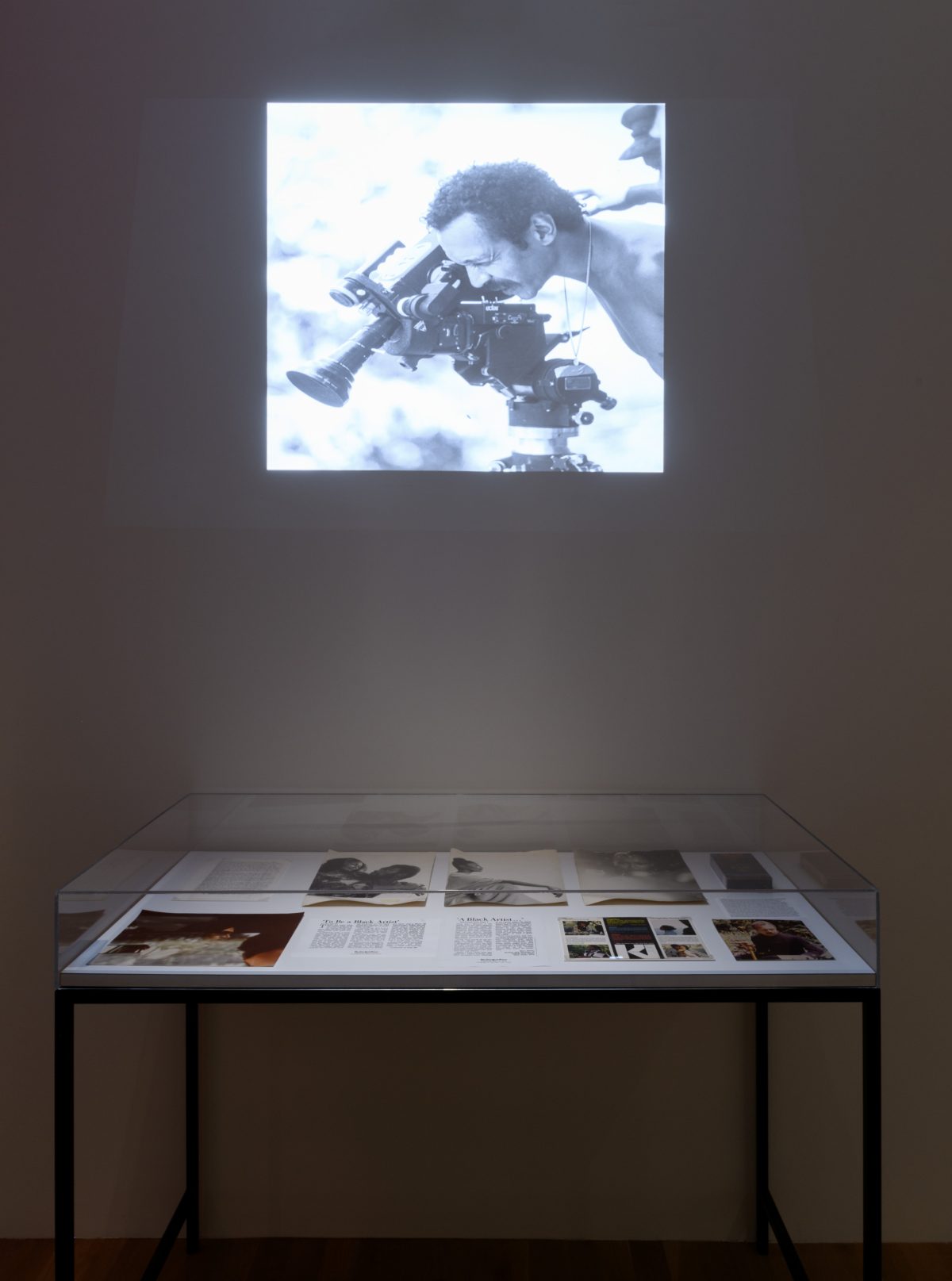
“There are times when the white critic must sit down and listen,” Bill Gunn wrote in 1973. “If he cannot listen and learn, then he must not concern himself with black creativity.” Part of an op-ed Gunn published in the New York Times following the flippant critical response to his now-iconic art horror movie Ganja & Hess, that line acts as a cipher for much of the career of the filmmaker, actor, and writer. Before his tragic early death in 1989, Gunn created a body of work that moved against and outside white hegemony, always reflecting a fierce sense of personal and artistic agency. He is now the subject of Till They Listen: Bill Gunn Directs America, a retrospective at Artists Space.

Jake Perlin and Hilton Als, who organized the exhibition alongside Artists Space, spoke briefly with Hyperallergic about Gunn. “The thing that struck me [about Gunn’s work] was the level of experimentation: it seemed to me the work of someone who was not looking left or right at contemporaries, but forward,” explained Perlin. “Forward, and inward,” added Als. “That was the problem: he can’t not tell his story, or some version of his story.”
This staunch commitment to personal vision is exemplified in Ganja & Hess, perhaps his most famous work. It’s a polyphonic fantasia of sex, vampirism, religion, and addiction, filtering the structural components of an exploitation horror flick through a mandala of animist hallucinations and anti-bourgeois sentiment. The film, with its surrealist stitching together of arthouse and grindhouse, confounded critics, many of whom dismissed it as incomprehensible. Others excoriated it as not sufficiently race-conscious, given its predominantly Black cast and crew. But as Gunn explained in a previously unpublished document included in the retrospective, the film is inherently a refutation of such concerns: “The true black story is not concerned with the ancient white problem of racism, which we see as an aging white indulgence which we can no longer support as artists or people.”
This logic of the refutation — negation, even — of the hegemonic courses through much of the collected works and materials in the show. It serves as both a throughline to Gunn’s practice and an explanation for why so much of his work was ignored or stifled in the first place. Before Ganja & Hess, he had written the screenplays for two major motion pictures, The Angel Levine and The Landlord (both 1970), and had also written and directed Stop, which went unreleased after it was given an X rating for its sexual content, including interracial and same-sex scenes. That film, nearly impossible to see since its production, is presented in its entirety at the exhibition, providing a rare look at the sort of sensual focus and densely layered aural and visual formalism that would set the tone for much of Gunn’s films.

Its repression too set a precedent — echoed in the flippancy not only toward Ganja & Hess, but also his final film, 1980’s Personal Problems. An epic “meta soap opera” about Black life in 1980s New York, it unfolds with frayed improvisation reminiscent of Cassavetes. Here too are Gunn’s trademarks — overlapping conversation in a crowded room, or a tender moment of tactile love as lead character Johnnie Mae caresses her lover while he plays piano. And here too was a troubled release, with the film lying mostly unseen for years after cable companies didn’t pick it up.
The logic of these suppressions is multivalent, and the breadth of material on view in the exhibition underlines the aspects of Gunn’s creativity that were deemed too uncouth for mass appeal. There’s his Blackness, to be sure. His centering of Black subjectivity in Ganja and Problems didn’t fit within the “grand-public-high-admission coliseum” of white-controlled cinema, as he put it, “in which black flesh is peddled every minute of every hour of every day” — a voraciousness he expanded upon in novels like Rhinestone Sharecropping. Als also pointed to his sexuality as a possible career roadblock, saying he’s sure that “[Gunn’s] queerness played a big part in his being professionally ostracized,” and that Stop was sealed away for so long because of its queer elements.
But also woven into those aspects of Gunn’s identity was an unwillingness to turn them into tools of didacticism for a blank-faced white audience eager to consume. “The white man is getting desperate now because he is not being included in all our thoughts and movements,” he said in a 1973 interview, later adding that he has “dealt with the myths of heterosexuality and homosexuality,” and has “gotten down to the word itself and then dismissed it.” Gunn did not set out to direct America, just himself. For him, art was not a political cudgel, but a mirror through which the self could unfold in all its endless complexities. Those complexities may have been untenable for the white establishment, but for Gunn, that was beside the point. “I think sometimes he gets framed as a victim, but we have to remember how joyful, and how happy he was to be making these things,” Als said. “It’s not that he was constantly beleaguered — he did have opportunities, and he ran with them. It’s just that he made those opportunities in his own image.”
Till They Listen: Bill Gunn Directs America is on view at Artists Space (11 Cortlandt Alley, Manhattan) through August 15.
0 Commentaires